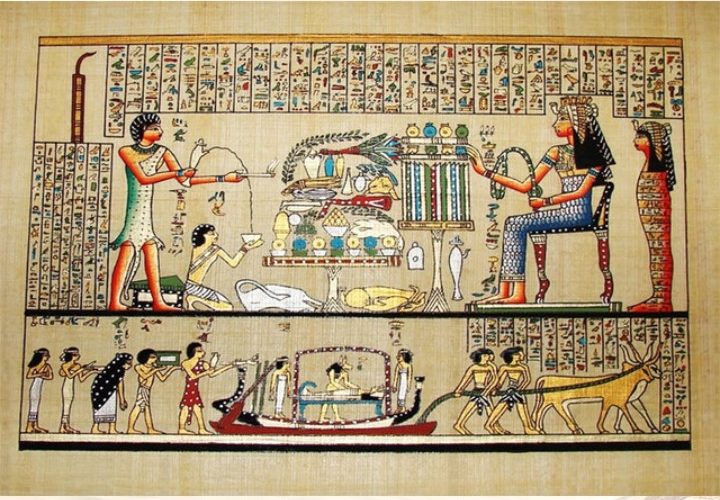Unlike other ancient cultures, the ancient Egyptians had respect for women, especially those with royal power.
The wives of pharaohs were not called queens, they held titles such as “Great Wife,” “Great Royal Consort,” and “God’s Wife.”
The daughters produced by these marriages were royal princesses. Princesses, however, didn’t inherit their father’s throne. Instead, the throne, upon the king’s death, was passed down to a son of (preferably) the Great Wife, or, if necessary, one of the secondary wives.
their daughters
Just as beauty and youth is important today, it held high importance in ancient Egypt. Females depicted in tombs and inscriptions were always portrayed as young and beautiful, despite their age. Also, similar to modern day, the ancient Egyptians took excellent care of their appearance. They had good hygiene and good grooming habits, and also enjoyed wearing makeup, exquisite clothing and even wigs.
Perfume and toiletry items have been found in tombs. Hairy bodies were not considered desirable among ancient Egyptians, and so the wealthy often shaved their bodies and their heads. They bathed frequently in a soda mix solution and used henna to dye their body, nails and hair. Royal women always had female attendants on hand to help them with their daily grooming rituals.
Egyptian Queen Attire
Egypt is known for its heat. So people, including the ancient Egyptian queens, dressed for the heat to keep cool. Queens were fond of wearing linen tunics and put them on by stepping into them. Queens also wore a petticoat (skirt) and cape. Unlike the commoners, queens wore colorful, embroidered linen. Beads were often added to clothes and “nets” of them were worn over the queen’s necks to look like part of their dress.
Egyptians dyed leather to wear as shoes and belts. Robes called kalasaris were worn draped over one or both shoulders. Some of these robes had sleeves and others didn’t, and some started at the neck while other started just below the breast. These robes usually included a skirt that touched the ankles and were cinched with a belt.
Depiction of Queen Ahmose-Nefertari
Egyptian Queen Tombs and Mummies
- In 1900, William Petrie an English Egyptologist discovered the tomb of Queen Merneith at Abydos in Tomb Y. She was buried near her husband, King Djet, and her son, Den.
- Queen Sobekneferu was possibly buried in Mazghuana, but this remains uncertain to this day.
- Queen Hatshepsut built her own mortuary complex at Deir el Bahri. Recently, scans of her mummy have revealed that she suffered from diabetes and arthritis.
- Joan Fletcher, Egyptologist, recently proved that a mummy found in KV35 in the Valley of the Kings is in fact the mummy of Queen Nefertiti.
- Queen Twosret’s tomb is KV14 in the Valley of the Kings which is also the tomb of Seknakhte, the Pharaoh that succeeded the queen.
- Queen Cleopatra’s tomb remains a mystery. It is believed to be located somewhere near Alexandria, Egypt, likely along with the remains of her Roman lover, Mark Antony.
Queen Mernua Mummy Trappings
Ruling Egyptian Queen Facts
- Queen Hatshepsut reigned longer than any other female in Egypt. Her reign lasted for more than 20 years.
- Queen Hatshepsut dressed as a king and wore a false beard to assert a masculine authority to appease the public and those who did not approve of a female ruler.
- Some believe Queen Nefertiti, wife of the Pharaoh Akhenaton, was the driving force behind the “one true god” religion centered around Aten.
- Cleopatra is also known as “The Queen of the Nile” and was not of true Egyptian descent, she also had Greek lineage.
- Ancient Egyptian women and queens alike were allowed to own property and hold high official positions. They could inherit wealth and defend their rights in a courtroom.
- Queen MerNeith was buried with 50 servants, indicating her great power as an Egyptian ruler.
